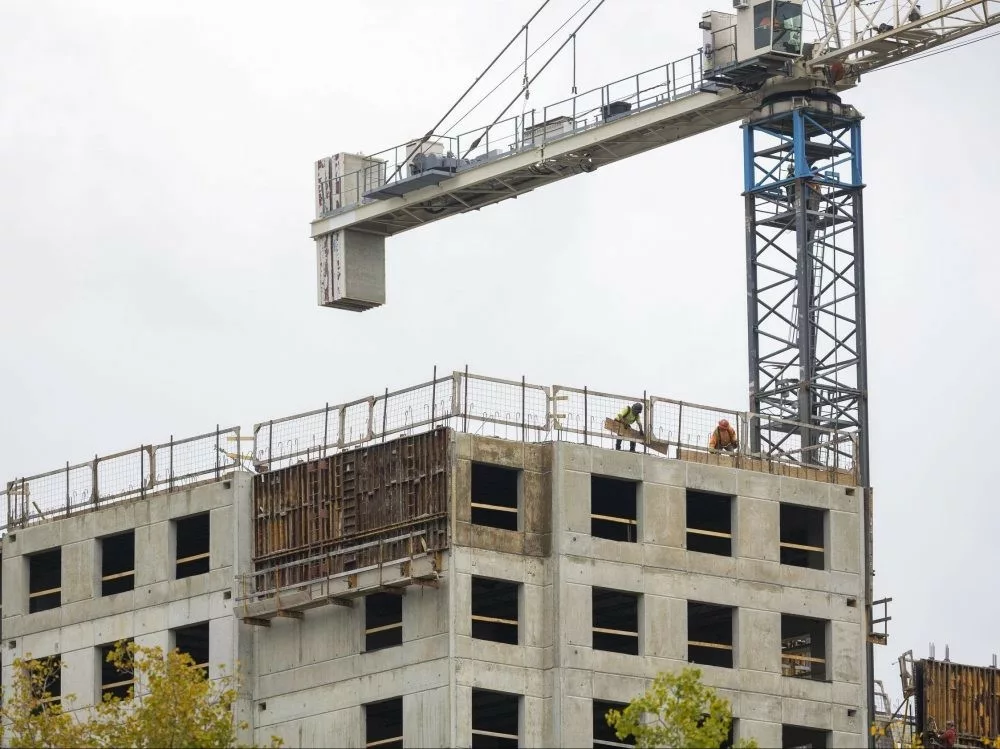Article content
Already one of Ontario’s fastest-growing cities, booming London will have to build more than 100,000 new homes over the next 25 years to keep up with housing demand, city hall says in a new projection.
Is that pace of construction – an average of roughly 4,500 new homes a year, or 80 per cent more than its 10-year average – even possible?
Industry experts say London could pull that off, but they also have concerns it may not be enough.
Advertisement 2
Story continues below
Article content
London’s population could rise by 239,000 between now and 2046, reaching a total population of 685,000 by that year, according to a new report on land availability headed next week to city council’s planning committee.
The figures, based on estimates by Ontario’s Ministry of Finance, would result in the city needing to build about 107,000 homes during that period to meet housing needs and adding about 450 hectares of land to its urban area for development, the report states.
“It’s certainly aggressive,” Mike Moffatt, an assistant professor at Western University’s Ivey business school, said in reference to the housing target. “It’s a much faster pace of building than we’ve seen in the past, but it’s absolutely necessary given how fast London has grown and the current housing shortage that we see in London.”
During the last 10 years, for instance, London’s annual average for units built has been about 2,500 a year. That number rose to about 3,100 a year between 2016 and 2021, but that would still fall short of the about 4,500 needed annually now to meet the projected demand.
Article content
Advertisement 3
Story continues below
Article content
“We have a lot of catching up to do . . . but we have seen other communities add this much housing over a similar period of time,” Moffatt said.
Recommended from Editorial
It was an opinion echoed by Mike Wallace, executive director of the London Development Institute.
He said higher interest rates imposed by the Bank of Canada have lowered demand for new homes during the past two years, impacting the pace of construction, but developers could ramp up quickly to meet demand.
“I can say confidently, from our industry, that when the market comes back to where it was, we will be not only able to achieve that number (of 4,500 units a year), we will be able to exceed that if the processes are in place to be able to move quickly on getting building permits,” Wallace said.
He’s more concerned about the speed at which new land can be made available for development and how the city will determine how much land will be needed, saying if London doesn’t have enough supply of land “all that demand will just go elsewhere.”
Advertisement 4
Story continues below
Article content
“We want to make sure that the model by which they determine how much land needs to be added or could be added to the urban growth boundary is accurate,” he said, noting London has in the past miscalculated how fast it would grow.
“We are growing at a greater rate than London ever has.”
Moffatt, the economist, said while 107,000 new homes may seem like a daunting figure, it could still be below what the city actually will need to build to absorb all future demand and help control home and rent prices.
He said city hall is putting a big emphasis on high-density projects such as apartment buildings, which can accommodate fewer people per unit. The city is projecting 45 per cent of new units would be high-density while another 28 per cent would come from row and townhouses. The rest are expected to be single family dwellings.
“Because the city is relying so much on high-density growth, they’re going to need more units just because those units are naturally going to be smaller than say a townhouse or a duplex,” Moffatt said. “So, the way that they’ve translated population growth into housing growth, or housing demand, I don’t think their formula makes sense.”
Travis Macbeth, city hall’s policy planning manager, defended the report, saying it represents a first draft as they continue to assess the city’s future land needs.
“I think the main point is, this is intended to have responsiveness and flexibility within it, and it’s a draft intended for continued consultation with the industry and the public,” Macbeth said.
A final report is expected in the fall.
jjuha@postmedia.com
Article content









Comments